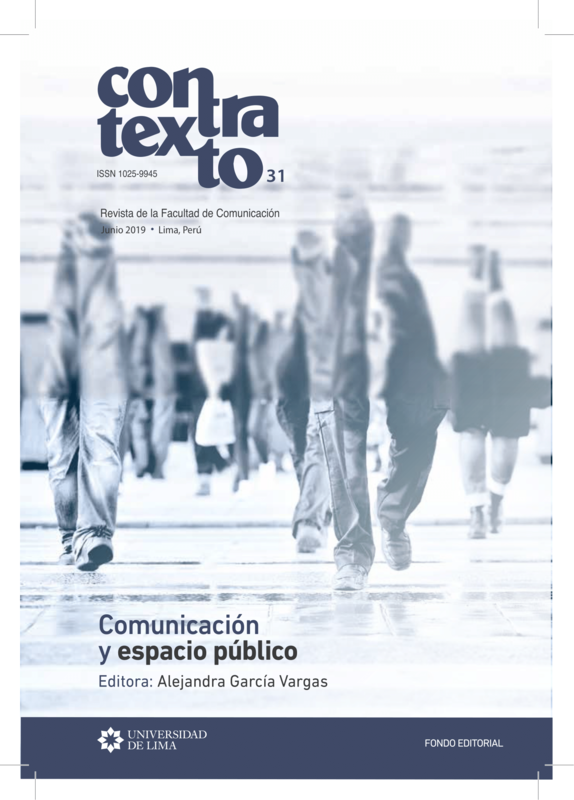Urban social conflicts in Lima: the centrality of communication in conflicts around the residential neighborhood character
DOI:
https://doi.org/10.26439/contratexto2019.n031.3893Abstract
This study was based on the analysis of three short cases of conflicts where the residential neighborhood character of an area was affected due to projects conducted by local governments or companies which sought to intensify and diversify the use of the urban space. The primary parties involved in the conflict were interviewed and secondary data was analyzed. Additionally, secondary journalistic sources, social media and official publications were reviewed to build the cases. The groups of residents used digital media to generate internal cohesion, implement early warning systems and spread their points of view. Local governments showed a lack of communicative strategies to ease the conflict or build trust. Instead, priority was given to a confrontational and non-transparent strategy that increased polarization and opposition. The communicative repertoires used by residents and authorities focused on strengthening their points of view and power in the conflict, aiming to have an impact on other actors to get greater public support for their cause. Furthermore, the communication resources used to build bridges, and generate rapprochement and dialogue were poor. Refocusing on the communication dimension for managing urban conflicts is needed especially from the government side.
Downloads
Downloads
Published
Issue
Section
License
All of the works published are licensed under a CC BY 4.0 Creative Commons Attribution license. (updated on March 1st 2021)
The content of the journal may be shared in any material or format. The content may be adapted, contributed upon and transformed. Both possibilities are only permitted in so far as they complete the following conditions:
- Attribution: Credit must be given where it is due, a link to the license must be provided and changes, if made, must be indicated. This should be done in the manner deemed appropriate, without suggesting that the licensor promotes you or your use of the material.
Ownership rights
The patrimonial rights for Contratexto are published under a Creative Commons BY 4.0 license, allowing authors to keep the patrimonial rights to their work without restrictions.
If a work published in Contratexto were to be copied, distributed, spread, or any other activities contemplated in the aforementioned license, the author(s) and the journal must be mentioned visibly and expressly.
Self-archive
This journal allows and encourages authors to post items submitted to the journal on personal websites or institutional repositories both prior to and after publication, while providing bibliographic details that credit, if applicable, its publication in this journal.


